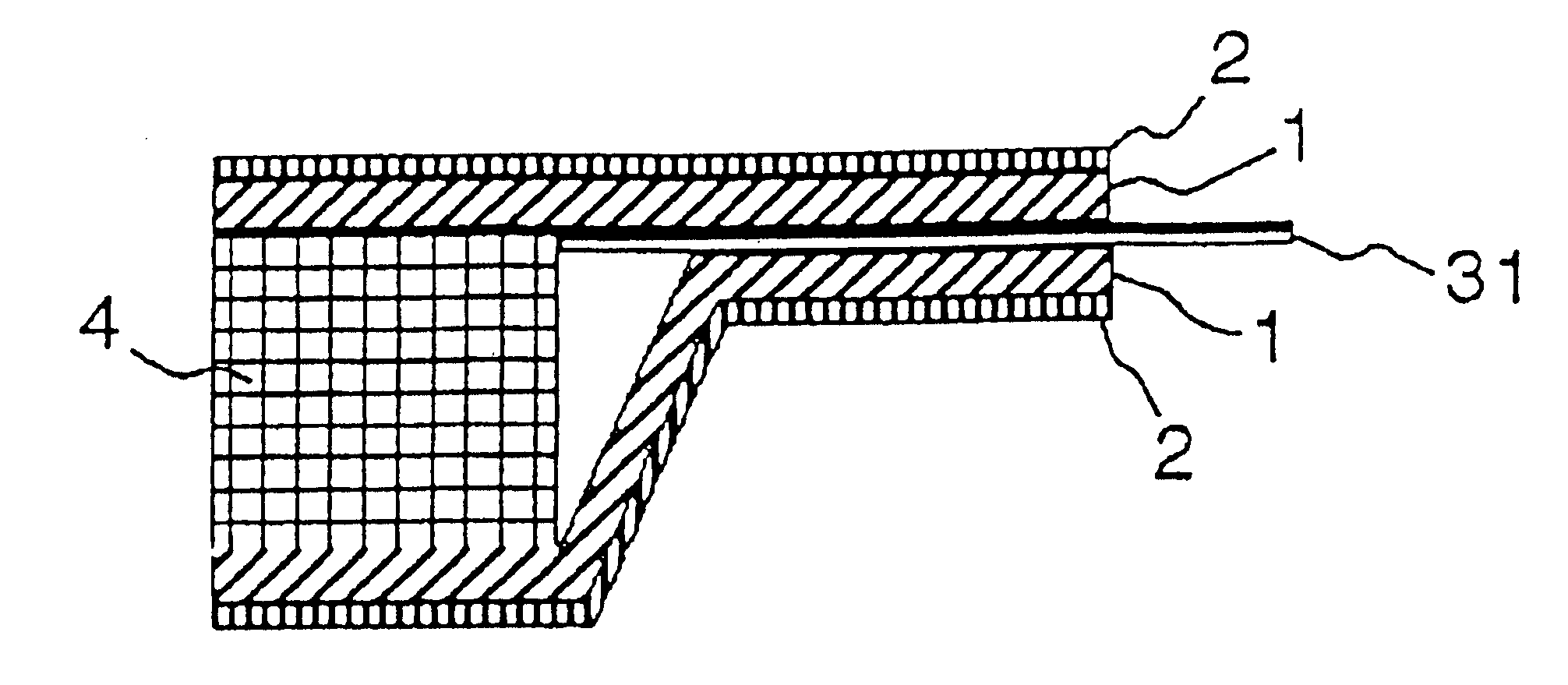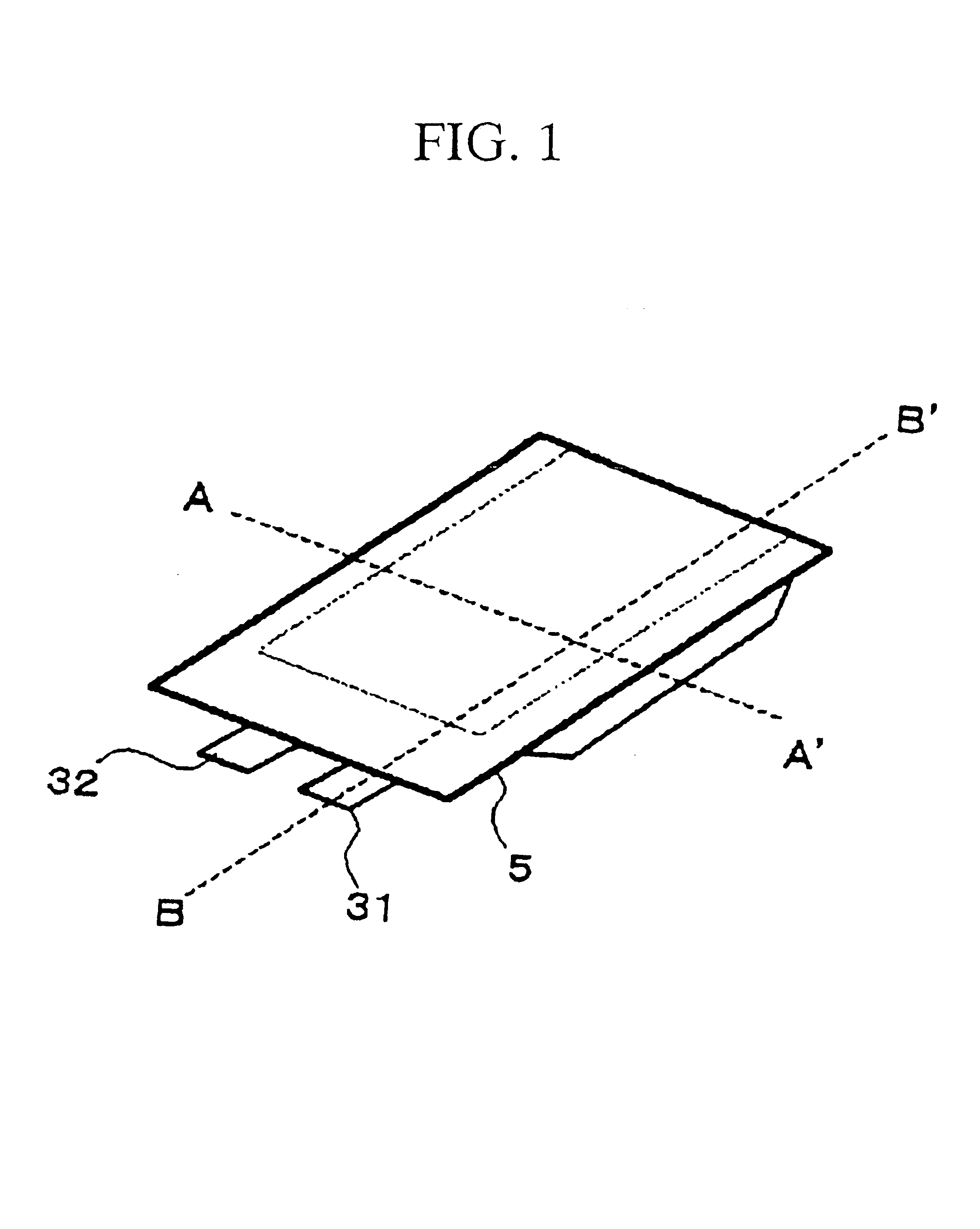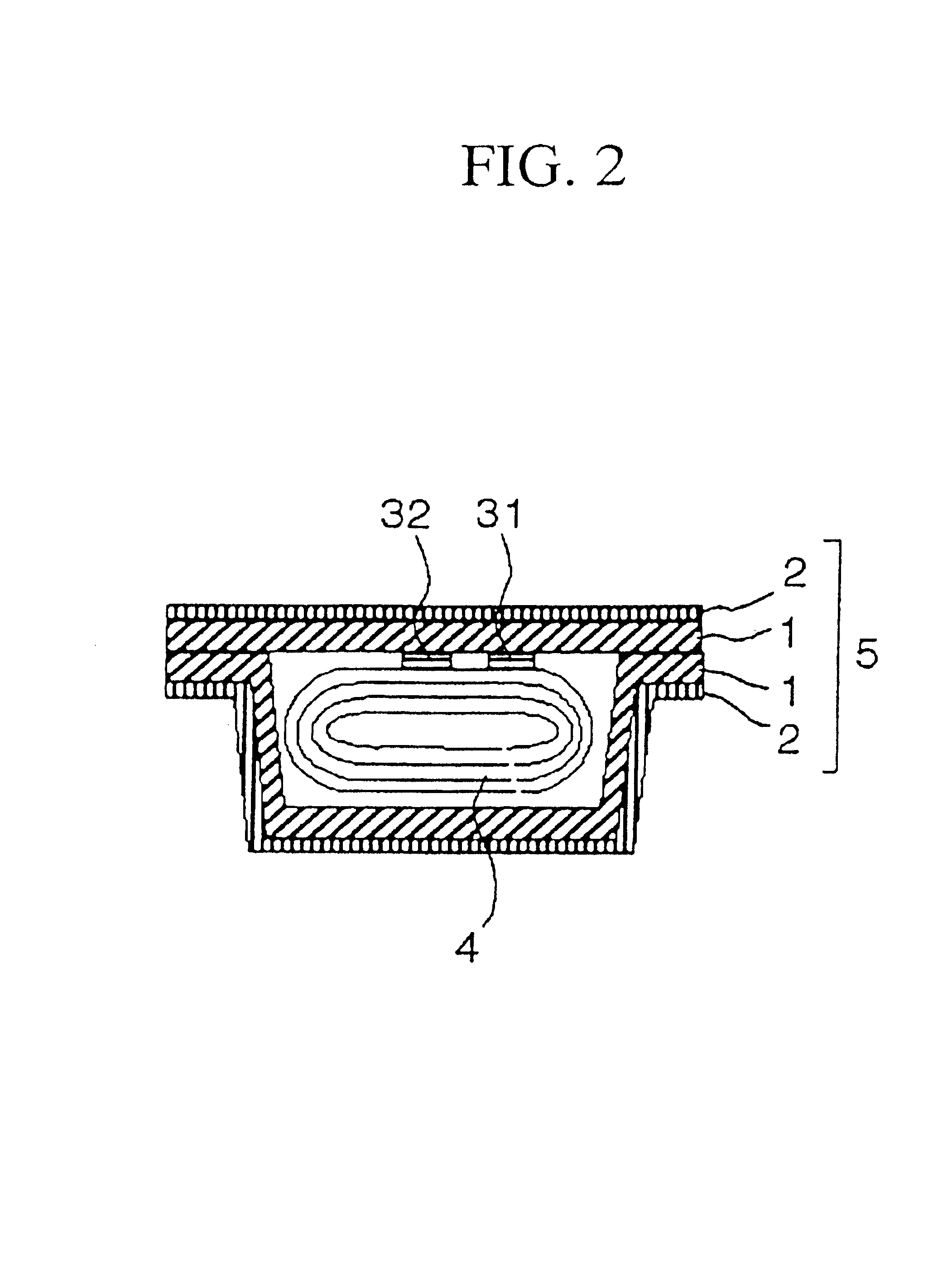Film-sealed non-aqueous electrolyte battery with improved surface-treated lead terminal
- Summary
- Abstract
- Description
- Claims
- Application Information
AI Technical Summary
Benefits of technology
Problems solved by technology
Method used
Image
Examples
embodiment
Preferred Embodiment
[0053]A preferred embodiment according to the present invention will be described in detail with reference to the drawings. FIG. 1 is a schematic perspective view of a film-sealed non-aqueous electrolyte battery in a preferred embodiment in accordance with the present invention. FIG. 2 is a cross sectional elevation view illustrative of the film-sealed non-aqueous electrolyte battery, taken along an A-A′ line of FIG. 1. FIG. 3 is an enlarged fragmentary cross sectional elevation view of the film-sealed non-aqueous electrolyte battery, taken along a B-B′ line of FIG. 1.
[0054]The film-sealed non-aqueous electrolyte battery mainly comprises a battery element 4 and a film case 5 which seals the battery element 4. The battery element 4 includes a non-aqueous electrolyte, a positive electrode, a negative electrode and a separator. The film case 5 further comprises laminations of a sealant polymer resin film 1, a metal foil 2 and a thermally stable resin film. The seala...
example 1
[0083]Lithium manganate powders of spinel structure, carbon donor providing conductivity, and polyvinylidene fluoride were blended at weight ratios of 90:5:5 into N-methylpyrolidone (hereinafter refereed to as NMP) and stirred to form a slurry containing NMP. An amount of NMP was adjusted in consideration of viscosity of the slurry. The slurry was uniformly applied by a doctor blade onto a first surface of an aluminum foil of 20 micrometers in thickness which is a positive collector for subsequent dry process in vacuum pressure at 100° C. for 2 hours. The slurry was also uniformly applied onto a second surface of the aluminum foil for subsequent dry process in vacuum pressure. This sheet was then rolled and pressed to form a positive electrode active material layer. A theoretical capacity was 600 mAh.
[0084]Amorphous carbon powders, and polyvinylidene fluoride were blended at weight ratios of 91:9 into N-methylpyrolidone (hereinafter referred to as NMP) and stirred to form a slurry c...
example 2
[0090]Lithium manganate powders of spinel structure, carbon donor providing conductivity, and polyvinylidene fluoride were blended at weight ratios of 90:5:5 into N-methylpyrolidone (hereinafter referred to as NMP) and stirred to form a slurry containing NMP. An amount of NMP was adjusted in consideration of viscosity of the slurry. The slurry was uniformly applied by a doctor blade onto a first surface of an aluminum foil of 20 micrometers in thickness which is a positive collector for subsequent dry process in vacuum pressure at 100° C. for 2 hours. The slurry was also uniformly applied onto a second surface of the aluminum foil for subsequent dry process in vacuum pressure. This sheet was then rolled and pressed to form a positive electrode active material layer. A theoretical capacity was 600 mAh.
[0091]Amorphous carbon powders, and polyvinylidene fluoride were blended at weight ratios of 91:9 into N-methylpyrolidone (hereinafter referred to as NMP) and stirred to form a slurry c...
PUM
| Property | Measurement | Unit |
|---|---|---|
| Thickness | aaaaa | aaaaa |
| Thickness | aaaaa | aaaaa |
| Nanoscale particle size | aaaaa | aaaaa |
Abstract
Description
Claims
Application Information
 Login to View More
Login to View More - R&D
- Intellectual Property
- Life Sciences
- Materials
- Tech Scout
- Unparalleled Data Quality
- Higher Quality Content
- 60% Fewer Hallucinations
Browse by: Latest US Patents, China's latest patents, Technical Efficacy Thesaurus, Application Domain, Technology Topic, Popular Technical Reports.
© 2025 PatSnap. All rights reserved.Legal|Privacy policy|Modern Slavery Act Transparency Statement|Sitemap|About US| Contact US: help@patsnap.com



